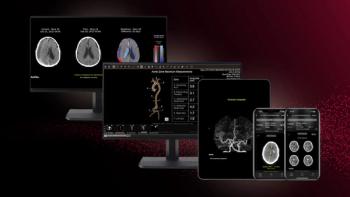
Heart docs embrace new cardiac CT, MR guidelines
Several cardiology societies have collaborated to update standards for training and utilization of cardiovascular CT and MR imaging, addressing increasingly burdensome credentialing requirements. The document applies only to cardiac applications and does not address extracardiac findings associated with cardiac imaging.
Several cardiology societies have collaborated to update standards for training and utilization of cardiovascular CT and MR imaging, addressing increasingly burdensome credentialing requirements. The document applies only to cardiac applications and does not address extracardiac findings associated with cardiac imaging.
Most cardiovascular and radiology programs lack the formal post-training education required to handle the diagnostic capabilities that CT and MRI now afford, according to the authors. A task force comprising the American College of Cardiology Foundation, American Heart Association, and American College of Physicians convened in 1998 to address that concern.
The task force's plan should enable physicians to offer competent cardiovascular imaging services and fulfill the requisites that healthcare institutions demand to bestow clinical privileges. The ACCF/AHA Clinical Competence Statement aims to complement current standards set by cardiology fellowships, practicing physicians, and the American College of Radiology instead of replacing them (Circulation 2005;112:598-617).
The guidelines tackle the know-how required to attain expertise in cardiovascular CT and MR imaging. They review several aspects of CT imaging:
- physics, radiation dose, and exposure
- electron-beam tomography
- multislice CT
- lab requirements
- contrast and noncontrast cardiac CT
- coronary CT angiography
- hybrid imaging devices
On the MRI side, the guidelines address different topics:
- safety
- biological and clinical effects of MRI exposure
- monitoring and ancillary hardware
- postprocessing and data analysis
- technical aspects of MRI including imaging sequences and their correct application
As far as the clinical indications for both modalities, the guidelines focus on acquired and congenital diseases of the heart muscle, valves, pericardium, coronary arteries and veins, and pulmonary veins, and thoracic aorta. The document touches on anatomic, functional, and perfusion imaging, coronary calcium scoring, and noncalcified plaque assessment.
Noncardiac conditions such as pulmonary embolism or peripheral vascular disease, or conditions affecting the carotid, renal, and intracranial vessels are excluded.
The new standards recommend additional training in cardiovascular CT or MRI at different stages. Establishing MR competence at the independent clinical practice stage, for instance, would require three months of training and performance of 150 cases. After that, the guidelines would require 50 cases or more per year and 30 hours of continuing medical education every three years.
Proven competence on CT would require eight weeks of training and 200 cases or four weeks and 150 cases with unenhanced CT scanning. Continuing education would require 50 cases or more per year and 20 hours of CME every three years.
In addition to the ACC, the AHA, and the ACP, the following societies collaborated in the development of these guidelines:
- American Society of Echocardiography
- American Society of Nuclear Cardiology
- Society of Atherosclerosis Imaging
- Society for Cardiovascular Angiography and Interventions
- Society for Cardiovascular Magnetic Resonance
- Society of Cardiovascular Computed Tomography
Dr. Matthew J. Budoff, an associate professor of medicine at the University of California, Los Angeles School of Medicine, chaired the writing committee.
For more information from the Diagnostic Imaging archives:
Newsletter
Stay at the forefront of radiology with the Diagnostic Imaging newsletter, delivering the latest news, clinical insights, and imaging advancements for today’s radiologists.




























